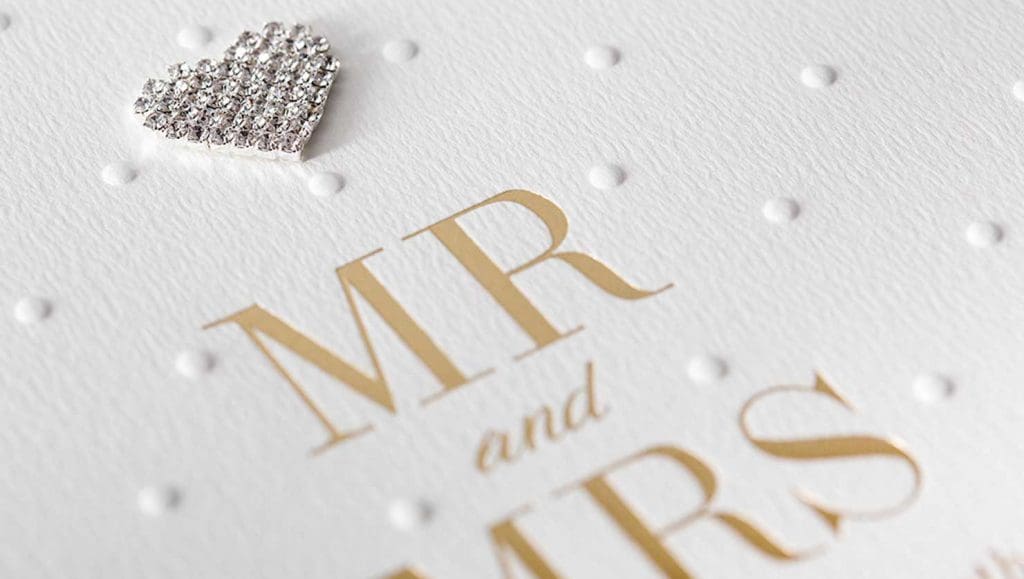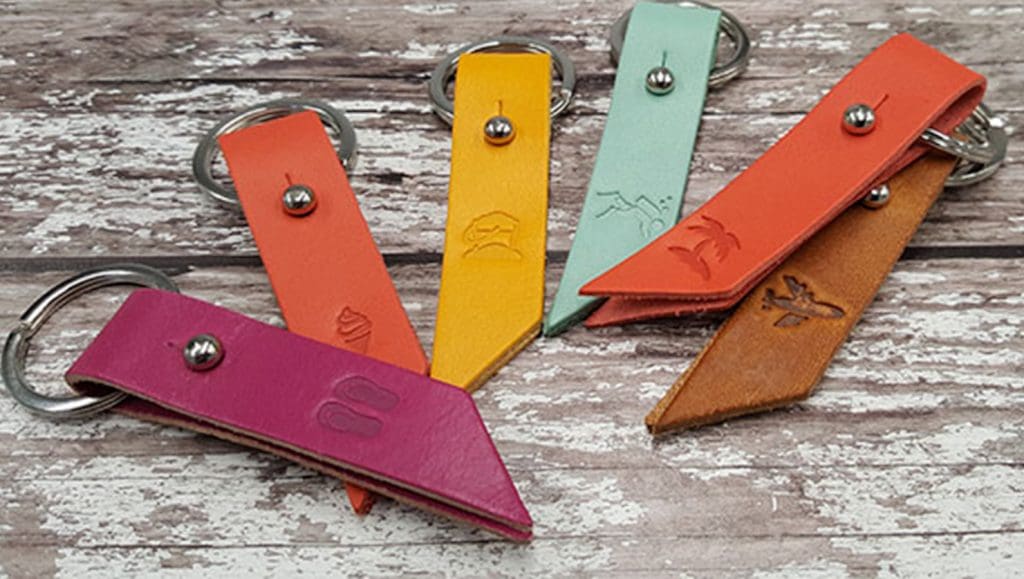You probably already know the difference between embossing and debossing: embossing creates a raised-up design, while debossing presses the design below the surface. Both are similar techniques, but different materials are better suited to each method.
What to emboss
Embossing is a very effective technique that can be used to draw attention and create something special out of an everyday item, resulting in a subtle and classy look.

Note that:
- Small areas are easiest to emboss – so logos and lettering work well.
- The best materials fit for embossing are paper and card. Embossed paper letterheads, leaflets and brochures look highly professional, and they’re great for conveying a sense of quality or luxury. Business cards and greeting cards are highly popular too.
If you’re wondering whether to emboss or deboss your product, cost may be a consideration. Embossing requires a metal counter, which is used to push the metal plate into the material. It’s therefore more expensive than debossing – but if you have a large print run, the extra outlay may be worthwhile.
What to deboss
The process of debossing uses more pressure to indent your design and is best for thicker materials such as leather and suede, or vinyl and rubber (a cheaper alternative).

Note that:
- The sunken design is more understated than embossing, so it’s also sometimes used on paper for a deliberately subtle look.
- Debossing is a cheaper technique than embossing, and it can be easier to achieve too.
- Common products include luggage tags, wallets and watch straps.
- With some leathers it’s possible to turn up the temperature to get a deeper effect and a darker colour. Our personal favourite is vegetable tanned leather.
It is possible to emboss leather too, and this rare effect is used for items like high-end car headrests. One reason it’s such a rare effect is that it usually requires two metal dies rather than one, so it can cost more.
Need some advice?
We’ve discussed which techniques work best for different materials, but we’ve seen that there’s quite a crossover; materials like paper and leather can either be embossed or debossed, depending on the effect you’re hoping to achieve.
If you’re not sure whether to use embossing or debossing, we’re always here to offer expert advice based on our years of experience in the craft. Contact us on 01206 251221 – we’d love to hear from you.


